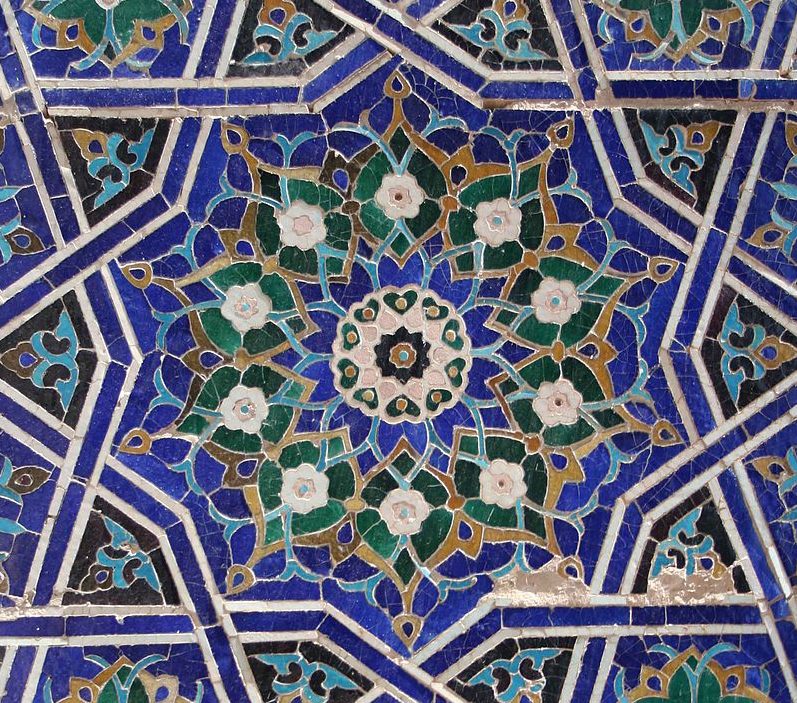2.3.4 The Silent Theology of Islamic Art

Samarkand Shah-i-Zinda Tuman Aqa Complex tiles. Wikimedia Commons user InfoCan, 2012.
If asked to introduce Islam to an audience unfamiliar with the religion or civilization, I would not necessarily recommend a translation of the Qur’an; nor a book of Islamic law, theology, or philosophy; nor one of the many popular books purporting to introduce Islam to the West. Rather, I would recommend listening to a beautiful untranslated recitation of the Qur’an in an Arabic maqām (melodic mode); or contemplating an illuminated Ottoman manuscript of the holy book in thuluth or kuficcalligraphy; or marveling at Fes’ Qarawiyyin, Isfahan’s Shaykh Lutfollah, or Cairo’s Ibn Tulun mosques; or listening to the music of the poetry of Hafez, Amīr Khusrow, or Ibn al-Fāriđ. These masterpieces of Islamic civilization communicate the beauty and truth of its revelation with a profound directness simply unmatched by articles or books about Islam… (Renovatio).
Read: The Silent Theology of Islamic Art // Renovatio
Guiding Questions:
- Why is imagination and artistic creation important for understanding God?
- How have different Muslim thinkers articulated the relationship between reason and imagination?
- What is the source of Islamic art, according to the author?
- Why is it important, on the author’s account, for madrasas to be beautiful in their architecture?
- Why is instrumental music controversial for many Muslims?
- Why is the loss of art in Islam linked to the growth in extreme sectarianism?
Photo: “Samarkand Shah-i-Zinda Tuman Aqa Complex.” Photo Credit: Wikimedia Commons user InfoCan. CC BY 3.0.


